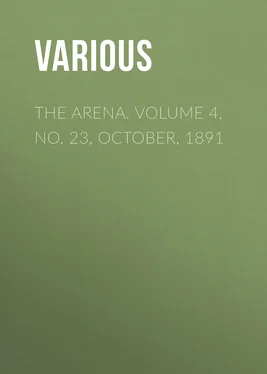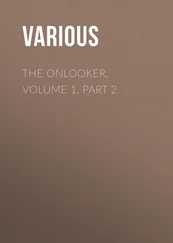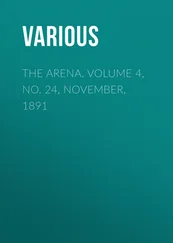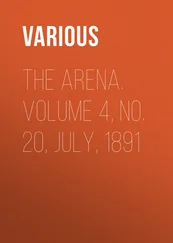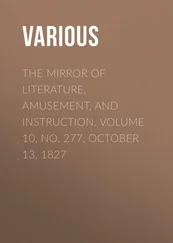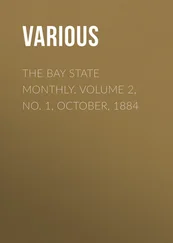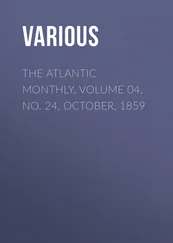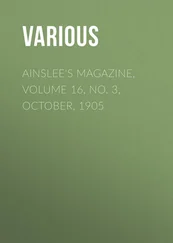Various - The Arena. Volume 4, No. 23, October, 1891
Здесь есть возможность читать онлайн «Various - The Arena. Volume 4, No. 23, October, 1891» — ознакомительный отрывок электронной книги совершенно бесплатно, а после прочтения отрывка купить полную версию. В некоторых случаях можно слушать аудио, скачать через торрент в формате fb2 и присутствует краткое содержание. Жанр: foreign_antique, periodic, foreign_edu, на английском языке. Описание произведения, (предисловие) а так же отзывы посетителей доступны на портале библиотеки ЛибКат.
- Название:The Arena. Volume 4, No. 23, October, 1891
- Автор:
- Жанр:
- Год:неизвестен
- ISBN:нет данных
- Рейтинг книги:3 / 5. Голосов: 1
-
Избранное:Добавить в избранное
- Отзывы:
-
Ваша оценка:
- 60
- 1
- 2
- 3
- 4
- 5
The Arena. Volume 4, No. 23, October, 1891: краткое содержание, описание и аннотация
Предлагаем к чтению аннотацию, описание, краткое содержание или предисловие (зависит от того, что написал сам автор книги «The Arena. Volume 4, No. 23, October, 1891»). Если вы не нашли необходимую информацию о книге — напишите в комментариях, мы постараемся отыскать её.
The Arena. Volume 4, No. 23, October, 1891 — читать онлайн ознакомительный отрывок
Ниже представлен текст книги, разбитый по страницам. Система сохранения места последней прочитанной страницы, позволяет с удобством читать онлайн бесплатно книгу «The Arena. Volume 4, No. 23, October, 1891», без необходимости каждый раз заново искать на чём Вы остановились. Поставьте закладку, и сможете в любой момент перейти на страницу, на которой закончили чтение.
Интервал:
Закладка:
There are two distinct lines of treatment which may effect a cure; one by intelligent and persistent self-discipline and culture, and the other through the efforts of another person called a healer. Often there is a combination of both. The power does not lie in the personality of the healer, nor in the exercise of his will-power. Neither hypnotism nor mesmeric control are elements in true mind-healing. The healer, in reality, is but an interpreter and teacher. The divine recuperative forces which exist, but are latent, are awakened and called into action. The patient is like a discordant instrument containing great capabilities, only waiting to respond in unison to active harmony. His distorted thought must be elevated and harmonized, so that he will see things in their true perspective. The healer gently guides him up into the “mount of transfiguration,” where he feels the glow of the divine image within, and sees that wholeness is already his, and will be made manifest as he recognizes it. A successful healer must be an overflowing fountain of love and good-will. He is but a conduit through which flows the divine repletion. He makes ideal conditions present. He steadily holds a mental image of his patient as already whole, and silently appeals to the unconscious mind of the invalid, to induce him to accept the same view. The patient’s mental background is like a sensitive plate, upon which will gradually appear outlines of health as they are positively presented. Improved views of his own condition spring up from within, and seem to him to be original. As they grow into expression in the outer man, his cure is complete.
Do failures occur? Undoubtedly, and often. Even infallible principles can have but imperfect application because of local limitations. The failure of a particular field of grain does not disprove the universal principle of vegetable growth. The imperfection of the healer, and the lack of receptivity in the patient, are local limitations. There are sudden cures, but as a rule recovery will be in the nature of a progressive growth. Lack of immediate results often causes disappointment, and leads to an abandonment of the treatment before the seed has had time to take root. The healer is the sower, and the patient’s unconscious mind is the soil. Often rubbish must be cleared away before any fertile spot is found. The cure must come from within. Sometimes the patient is cherishing some secret sin, or giving place to trains of thought colored with envy, jealousy, avarice, or selfishness. These are all positive obstacles to both mental and physical improvement, for thoughts are real things. The patient must actively co-operate with the healer, and make himself transparent to the truth. That which is misshapen has to grow symmetrical. Even if the mind could be instantly permeated with the belief of health, the body will need a little time to completely change its expression. Should these limitations discourage anyone? Not in the least, but rather the reverse. The fact that the cure is in the nature of a growth, is evidence that it is normal and permanent, rather than magical or capricious. Limitations are present, but they can be surmounted.
The phenomenon of pain, so commonly regarded as an evil, is only a warning voice to summon our consciousness from its resting-place in the damp, morgue-like basement of our being, to the higher apartments, where sunshine and harmony are ever present. It is beneficent when its message is heeded, for it is thereby transformed into blessing. Our resistance to it, and misunderstanding of its significance, prevent that possible transformation. The process of cure through mind, though in itself a steady growth, often appears to the consciousness of the patient as vibratory and uneven.
Many could heal themselves without the aid of another, if they appreciated the tremendous power for good of concentrated mental delineation of the ideal. By such exercises of mind, a wholesome environment can be built up, even if at first the process seems almost mechanical. But instead of such self-building, out of an infinitude of divine material, the average man is inclined to vacate the control of his being, put his body into the keeping of his doctor, and his soul [himself] into the care of his priest or pastor.
Efficiency for self-treatment is increased as the power of abstraction is cultivated. Hold a firm consciousness of the spiritual self, and of the fact that the material form is only expression made visible. Firmly deny the validity of adverse sensuous evidence, and at length it will disappear. Silently but persistently affirm health, harmony, and the divine image. Give out good thought, for thoughts are real gifts. In proportion as you pour out, the divine repletion pours in. Look upon the physical self as only a false claimant for the Ego. Hold only the good in your field of vision, and let disease and evil fade out to their native nothingness, from lack of standing-room. Even a warfare against evils as objective realities, tends to make them more realistic. At convenient seasons, bar out the external world, and rivet the mind tenaciously to the loftiest ideals and aspirations, and for the time being forget that you possess a body. Oh, victim of nervous prostration and insomnia, test these principles and see if they are not superior to anodynes, opiates, bromides, and chorals, and be assured that they leave no sting behind. The great boon which they bestow is not limited to nervous and mental disorders; its virtue penetrates to the outermost physical limits.
The whole atmosphere of race thought in which we live is sensuous. This vast unconscious influence must be overcome. The mental healer is like one rowing against the current of a mighty river. Humanity is “bound in one bundle,” and it is with difficulty that a few can advance much faster than the rythmical step of the mass. Even the Great Exemplar in some places could not do many mighty works because of surrounding unbelief.
Man is peering into the dust for new supplies of life, which are stored around and above him. Is it not time that he should make a serious effort to throw off the galling yoke of cruel though intangible masters, and achieve freedom and emancipation?
Turning to the religious aspect of mental healing, it is seen to be in harmony with revelation, and also with the highest spiritual ideal in all religions. While rebuking scholastic and dogmatic systems on the one hand, and pseudo-scientific materialism on the other, it vitalizes and makes practical the principles of the Sermon on the Mount. The healing of to-day is the same in kind, though not equal in degree to that of the primitive church. It is in accord with spiritual law, which is ever uniformly the same under like conditions. The miracles of the Apostolic Age were real as transactions, but their miraculous hue was in the materialistic vision of the observers. Healing is the outward and practical attestation of the power and genuineness of spiritual religion, and ought not to have dropped out of the Church. The divine commission to preach the gospel and heal the sick, never rightly could have been severed in twain, because they are only different sides of one Whole. By what authority is one part declared binding through ages and the other ignored? Who will assert that God is changeable, so that any divinely bestowed boon to one age could be withdrawn from a subsequent one? The direct assurance of the Christ, that “these signs shall follow them that believe,” is perpetual in its scope, because “them that believe” are limited to no age, race, or condition. As ecclesiasticism and materialism crept into the early church, and personal ambitions and worldly policies sapped its vitality, spiritual transparency and brotherly love faded out, and with them went the power—or rather the recognition of the power—to heal.
Wonderful works are not limited alone to those who accept the Christian religion; but in proportion as other systems recognize the supremacy of the spiritual element, and catch even a partial glow of “that true light which lighteth every man that cometh into the world,” their intrinsic qualities will be made outwardly manifest. A right conception of God, as infinite present Good, strongly aids in producing the expression of health. “In Him we live, and move, and have our being.” An abiding concept of such truth directly promotes trust, harmony, healing. Seeming ills are not God-created powers, but human perversions and reflected images of subjective states. As a higher and spiritual standpoint is gained, apparent evils dissolve, and then in bold relief is seen the fair proportions of the Kingdom of the Real.
Читать дальшеИнтервал:
Закладка:
Похожие книги на «The Arena. Volume 4, No. 23, October, 1891»
Представляем Вашему вниманию похожие книги на «The Arena. Volume 4, No. 23, October, 1891» списком для выбора. Мы отобрали схожую по названию и смыслу литературу в надежде предоставить читателям больше вариантов отыскать новые, интересные, ещё непрочитанные произведения.
Обсуждение, отзывы о книге «The Arena. Volume 4, No. 23, October, 1891» и просто собственные мнения читателей. Оставьте ваши комментарии, напишите, что Вы думаете о произведении, его смысле или главных героях. Укажите что конкретно понравилось, а что нет, и почему Вы так считаете.
